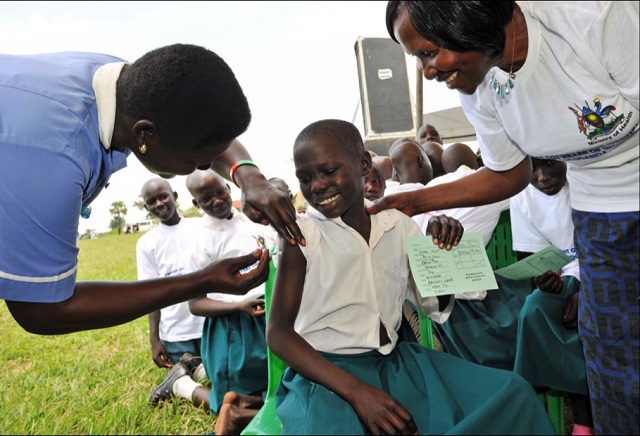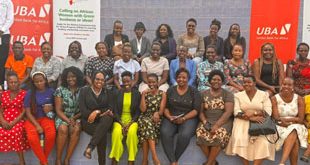
Kampala, Uganda | THE INDEPENDENT | The uptake of the second dose of the Human Papilloma Virus -HPV vaccines has increased among school-going children, according to reports from the health ministry.
The vaccine, which is taken in two intervals, a shot every six months, was introduced by the government in 2015 to mainly protect girls between 9 and 14 years against cervical cancer.
Like all other immunizations that guard against viral infections, HPV vaccines stimulate the body to produce antibodies that, in future encounters with HPV, bind to the virus and prevent it from infecting cells. The HPV vaccine is given as a series of shots.
But data from the health ministry shows that while uptake of the first dose has always stood at over 75 per cent, uptake of the second dose has been as low as 22 per cent in some parts of the country. It is based on these figures that the Health Ministry launched a campaign to encourage uptake of the second dose.
In 2016, 83 per cent of girls in the target age bracket got the first dose but only 22 percent of those who were vaccinated went back for the second dose.
Preliminary results for the months of January to November, 2019 show that uptake of the second dose of the vaccine has increased to 53 percent compared to 86 percent who got the first dose.
Dr Immaculate Ampaire, the Deputy Manager of the Uganda National Expanded Programme on Immunization-UNEPI says the increase was realized after the health ministry decided to involve teachers in the programme, and today, besides encouraging the girls to complete the dose, there are clear records which makes follow up easy.
She says that they faced challenges in keeping proper records of children who had been vaccinated and when they would need their next jab. In the new programme, teachers were availed with registers that help them keep track of which child needs a jab and when it is needed.
Results show that in some parts of the country, due to the introduction of registers, uptake of that second dose has been met 100 per cent. They include the districts of Abim, Agago, Arua, Buhweju, Bushenyi, Gulu, Kaabong, Kalangala, Kaliro, Kalungu, Kamwenge, Kapelebyong, Kasanda, Lyantonde, Manafwa, Maracha, Nakapiripirit, Napak, Rubanda and Pallisa.
Dr Ampaire, however, says that while they have brought schools on board, they still face resistance from the parents. She says while parents are against children being immunized at schools, they are not playing their role to ensure that their children are vaccinated.
Dr Ampaire says that in districts where parent participation is low, less number of girls can go back and get the second dose.
“Parents complain that they want more involvement but they do nothing. When they do nothing, their children do not come back for the second dose which makes even the first one irrelevant,” Dr Ampaire said.
The worst performing districts who scored below 30 percent of girls who took the second dose include Wakiso, Otuke, Ngora, Ntoroko, Kyotera, Kwania, Kole, Kitgum, Amuru, Amolatar, Bukomansimbi, Bukwo, Bulambuli, Kiboga, Kaberamaido, Bulisa, Bunyagabu, Butebo, Kakumiro, Kasese, Kibaale and Kumi.
Cervical cancer is one of the most common cancers in Uganda. Data from the Uganda Cancer Institute shows that it is the number one cause of cancer-related deaths in the country.
******
URN
 The Independent Uganda: You get the Truth we Pay the Price
The Independent Uganda: You get the Truth we Pay the Price


